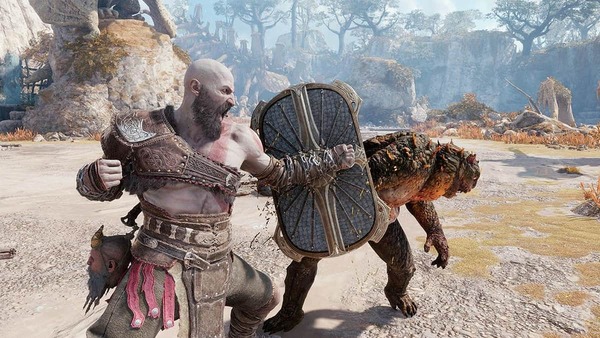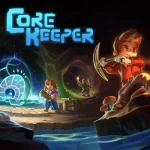
PUBG Mobile
All trademarks belong to their respective owners.
Advertisement
Popular Now
The Evolution of Map Strategy in PUBG Mobile: How Terrain and Tactics Shape the Battle Royale Experience
Introduction
PUBG Mobile, the mobile adaptation of the iconic battle royale game PlayerUnknown's Battlegrounds, has become a global phenomenon since its release. While the game’s core mechanics—looting, surviving, and being the last player standing—remain consistent, the strategies players use to achieve victory have evolved significantly. One of the most critical yet often overlooked aspects of PUBG Mobile is map strategy. The game’s diverse maps, each with unique terrain and features, demand different approaches to gameplay. This article delves into the evolution of map strategy in PUBG Mobile, exploring how terrain, loot distribution, and player behavior have shaped the meta over time.
The Early Days: Learning the Basics of Erangel When PUBG Mobile first launched, Erangel was the only available map. This 8x8 km island, with its mix of urban areas, open fields, and dense forests, served as the foundation for players to learn the basics of battle royale gameplay. Early strategies were straightforward: land in high-loot areas like Pochinki or Military Base, gear up quickly, and engage in early fights. However, as players became more experienced, they began to realize that survival often depended on more than just firepower. [caption id="attachment_2001" align="aligncenter" width="600"] When PUBG Mobile first launched, Erangel was the only available map[/caption]
The Rise of Safe Zone Awareness
One of the first strategic elements players mastered was safe zone management. Understanding the timing and location of the shrinking play zone became crucial. Early players often made the mistake of staying too long in high-loot areas, only to be caught outside the safe zone and eliminated by the encroaching blue circle. Over time, players learned to prioritize positioning over loot, using vehicles and natural cover to stay ahead of the zone.
Key Takeaways:
When PUBG Mobile first launched, Erangel was the only available map[/caption]
The Rise of Safe Zone Awareness
One of the first strategic elements players mastered was safe zone management. Understanding the timing and location of the shrinking play zone became crucial. Early players often made the mistake of staying too long in high-loot areas, only to be caught outside the safe zone and eliminated by the encroaching blue circle. Over time, players learned to prioritize positioning over loot, using vehicles and natural cover to stay ahead of the zone.
Key Takeaways:
The Miramar Meta: Adapting to a Desert Landscape The introduction of Miramar, a desert-themed map, marked a significant shift in gameplay strategy. Unlike Erangel, Miramar’s vast open spaces and sparse cover forced players to rethink their approach. High-loot areas like Pecado and Hacienda del Patrón became hotspots for early-game action, but surviving in Miramar required a different set of skills. The Importance of Long-Range Combat Miramar’s open terrain made long-range combat essential. Players began to favor sniper rifles and scoped weapons, using the map’s elevated positions to their advantage. The lack of cover also made vehicles more vulnerable, leading to the rise of strategic driving and ambush tactics. Players who could master long-range engagements and positioning thrived in Miramar’s harsh environment. Key Takeaways:
Sanhok: The Fast-Paced Jungle Experience Sanhok, a smaller 4x4 km map, brought a faster-paced gameplay style to PUBG Mobile. With its dense jungles, tight corridors, and frequent engagements, Sanhok required players to adapt to a more aggressive meta. The map’s high loot density and smaller size meant that players could gear up quickly and engage in fights almost immediately. The Shift to Close-Quarters Combat Sanhok’s close-quarters combat emphasized the use of shotguns, SMGs, and assault rifles. Players who excelled in fast reflexes and quick decision-making dominated this map. The dense foliage also introduced new stealth tactics, with players using the environment to ambush unsuspecting opponents. Sanhok’s fast-paced gameplay appealed to players looking for constant action and shorter match times. Key Takeaways:
Vikendi: Mastering the Snowy Terrain Vikendi, a snow-covered map, added another layer of complexity to PUBG Mobile’s gameplay. With its mix of urban areas, frozen lakes, and dense forests, Vikendi required players to adapt to a new set of challenges. The map’s unique terrain, including footprints left in the snow, introduced new strategic elements. The Role of Stealth and Tracking Vikendi’s snowy terrain made stealth a critical component of gameplay. Players could track opponents by following their footprints, adding a new layer of strategy to the game. The map also featured dynamic weather conditions, such as snowstorms, which reduced visibility and forced players to adapt their tactics on the fly. Vikendi’s blend of urban and natural environments made it a favorite among players who enjoyed a mix of combat and strategy. Key Takeaways:
Livik: The Compact Battlefield Livik, a 2x2 km map, was designed specifically for PUBG Mobile. Its compact size and unique features, such as hot springs and volcanic terrain, created a fast-paced and action-packed gameplay experience. Livik’s smaller size meant that players had to adapt to constant engagements and quick rotations. The Rise of Aggressive Playstyles Livik’s design encouraged aggressive playstyles, with players often engaging in fights within minutes of landing. The map’s unique features, such as the hot springs that restored health, added new strategic elements. Players who could quickly adapt to the fast-paced gameplay and make use of the map’s unique features thrived in Livik. Key Takeaways:
The Role of Vehicles in Map Strategy Vehicles have always played a crucial role in PUBG Mobile, but their importance varies depending on the map. In large maps like Erangel and Miramar, vehicles are essential for rotating quickly and staying ahead of the safe zone. In smaller maps like Sanhok and Livik, vehicles are less critical but can still provide a tactical advantage. Strategic Vehicle Usage Players have developed various strategies for using vehicles, from using them as mobile cover to setting up ambushes. Vehicles also play a role in endgame scenarios, where positioning and mobility can mean the difference between victory and defeat. However, vehicles also come with risks, as they can attract attention and make players vulnerable to ambushes. Key Takeaways:
The Impact of Loot Distribution on Strategy Loot distribution varies significantly across PUBG Mobile’s maps, influencing player strategies. High-loot areas like Pochinki and Military Base attract aggressive players looking for early fights, while low-loot areas offer a safer but slower start. Understanding loot distribution is crucial for developing effective strategies. Balancing Risk and Reward Players must weigh the risks and rewards of landing in high-loot areas. While these areas offer the best gear, they also attract the most players, increasing the likelihood of early fights. Low-loot areas provide a safer start but may leave players under-equipped for mid- and late-game engagements. Successful players learn to balance risk and reward based on their playstyle and the map’s characteristics. [caption id="attachment_2004" align="aligncenter" width="600"] Players must weigh the risks and rewards of landing in high-loot areas[/caption]
Key Takeaways:
Players must weigh the risks and rewards of landing in high-loot areas[/caption]
Key Takeaways:
The Evolution of Endgame Strategies The endgame, or final circles, is where PUBG Mobile’s strategy truly shines. As the play area shrinks, players must rely on positioning, cover, and quick decision-making to outlast their opponents. Endgame strategies have evolved significantly over time, with players developing new tactics to gain an edge. The Importance of Positioning and Cover In the endgame, positioning is everything. Players must constantly move to stay within the safe zone while avoiding enemy fire. Natural cover, such as trees and rocks, becomes critical, as does the ability to quickly adapt to changing circumstances. Players who can maintain good positioning and use cover effectively have a significant advantage in the final circles. Key Takeaways:
The Role of Communication and Teamplay While PUBG Mobile can be played solo, teamplay is a core component of the game. Effective communication and coordination are essential for success, especially in squad matches. Teams that can work together, share resources, and execute coordinated strategies have a significant advantage over disorganized opponents. Developing Team Synergy Successful teams develop synergy through practice and communication. Players must learn to trust their teammates, share information, and execute strategies as a unit. Roles within the team, such as the sniper, medic, and scout, also play a crucial role in achieving victory. Key Takeaways:
The Future of Map Strategy in PUBG Mobile As PUBG Mobile continues to evolve, so too will its map strategies. New maps, updates, and gameplay mechanics will introduce new challenges and opportunities for players. The future of PUBG Mobile lies in its ability to keep the gameplay fresh and engaging, while maintaining the core elements that make it a beloved battle royale experience. [caption id="attachment_2003" align="aligncenter" width="600"] As PUBG Mobile continues to evolve, so too will its map strategies[/caption]
The Role of Community Feedback
Community feedback has always played a crucial role in shaping PUBG Mobile. Developers actively listen to player input, making adjustments to maps, weapons, and gameplay mechanics based on community preferences. This collaborative approach ensures that PUBG Mobile remains a dynamic and exciting game for players worldwide.
Key Takeaways:
As PUBG Mobile continues to evolve, so too will its map strategies[/caption]
The Role of Community Feedback
Community feedback has always played a crucial role in shaping PUBG Mobile. Developers actively listen to player input, making adjustments to maps, weapons, and gameplay mechanics based on community preferences. This collaborative approach ensures that PUBG Mobile remains a dynamic and exciting game for players worldwide.
Key Takeaways:
Conclusion The evolution of map strategy in PUBG Mobile reflects the game’s growth and the community’s deepening understanding of its mechanics. From the early days of Erangel to the fast-paced action of Livik, each map has introduced new challenges and opportunities for players. As PUBG Mobile continues to evolve, so too will the strategies and tactics that define it, ensuring that the game remains a thrilling and dynamic battle royale experience.
The Early Days: Learning the Basics of Erangel When PUBG Mobile first launched, Erangel was the only available map. This 8x8 km island, with its mix of urban areas, open fields, and dense forests, served as the foundation for players to learn the basics of battle royale gameplay. Early strategies were straightforward: land in high-loot areas like Pochinki or Military Base, gear up quickly, and engage in early fights. However, as players became more experienced, they began to realize that survival often depended on more than just firepower. [caption id="attachment_2001" align="aligncenter" width="600"]
 When PUBG Mobile first launched, Erangel was the only available map[/caption]
The Rise of Safe Zone Awareness
One of the first strategic elements players mastered was safe zone management. Understanding the timing and location of the shrinking play zone became crucial. Early players often made the mistake of staying too long in high-loot areas, only to be caught outside the safe zone and eliminated by the encroaching blue circle. Over time, players learned to prioritize positioning over loot, using vehicles and natural cover to stay ahead of the zone.
Key Takeaways:
When PUBG Mobile first launched, Erangel was the only available map[/caption]
The Rise of Safe Zone Awareness
One of the first strategic elements players mastered was safe zone management. Understanding the timing and location of the shrinking play zone became crucial. Early players often made the mistake of staying too long in high-loot areas, only to be caught outside the safe zone and eliminated by the encroaching blue circle. Over time, players learned to prioritize positioning over loot, using vehicles and natural cover to stay ahead of the zone.
Key Takeaways:
- Erangel served as the training ground for PUBG Mobile players.
- Early strategies focused on high-loot areas and early engagements.
- Safe zone awareness became a critical skill for survival.
The Miramar Meta: Adapting to a Desert Landscape The introduction of Miramar, a desert-themed map, marked a significant shift in gameplay strategy. Unlike Erangel, Miramar’s vast open spaces and sparse cover forced players to rethink their approach. High-loot areas like Pecado and Hacienda del Patrón became hotspots for early-game action, but surviving in Miramar required a different set of skills. The Importance of Long-Range Combat Miramar’s open terrain made long-range combat essential. Players began to favor sniper rifles and scoped weapons, using the map’s elevated positions to their advantage. The lack of cover also made vehicles more vulnerable, leading to the rise of strategic driving and ambush tactics. Players who could master long-range engagements and positioning thrived in Miramar’s harsh environment. Key Takeaways:
- Miramar introduced a desert landscape with unique challenges.
- Long-range combat and positioning became critical.
- Vehicles and ambush tactics gained importance.
Sanhok: The Fast-Paced Jungle Experience Sanhok, a smaller 4x4 km map, brought a faster-paced gameplay style to PUBG Mobile. With its dense jungles, tight corridors, and frequent engagements, Sanhok required players to adapt to a more aggressive meta. The map’s high loot density and smaller size meant that players could gear up quickly and engage in fights almost immediately. The Shift to Close-Quarters Combat Sanhok’s close-quarters combat emphasized the use of shotguns, SMGs, and assault rifles. Players who excelled in fast reflexes and quick decision-making dominated this map. The dense foliage also introduced new stealth tactics, with players using the environment to ambush unsuspecting opponents. Sanhok’s fast-paced gameplay appealed to players looking for constant action and shorter match times. Key Takeaways:
- Sanhok introduced a smaller, faster-paced map.
- Close-quarters combat and stealth tactics became essential.
- The map appealed to players seeking constant action.
Vikendi: Mastering the Snowy Terrain Vikendi, a snow-covered map, added another layer of complexity to PUBG Mobile’s gameplay. With its mix of urban areas, frozen lakes, and dense forests, Vikendi required players to adapt to a new set of challenges. The map’s unique terrain, including footprints left in the snow, introduced new strategic elements. The Role of Stealth and Tracking Vikendi’s snowy terrain made stealth a critical component of gameplay. Players could track opponents by following their footprints, adding a new layer of strategy to the game. The map also featured dynamic weather conditions, such as snowstorms, which reduced visibility and forced players to adapt their tactics on the fly. Vikendi’s blend of urban and natural environments made it a favorite among players who enjoyed a mix of combat and strategy. Key Takeaways:
- Vikendi introduced snowy terrain and dynamic weather.
- Stealth and tracking became essential skills.
- The map offered a mix of urban and natural environments.
Livik: The Compact Battlefield Livik, a 2x2 km map, was designed specifically for PUBG Mobile. Its compact size and unique features, such as hot springs and volcanic terrain, created a fast-paced and action-packed gameplay experience. Livik’s smaller size meant that players had to adapt to constant engagements and quick rotations. The Rise of Aggressive Playstyles Livik’s design encouraged aggressive playstyles, with players often engaging in fights within minutes of landing. The map’s unique features, such as the hot springs that restored health, added new strategic elements. Players who could quickly adapt to the fast-paced gameplay and make use of the map’s unique features thrived in Livik. Key Takeaways:
- Livik introduced a compact, fast-paced map.
- Aggressive playstyles and quick rotations became essential.
- Unique features like hot springs added new strategic elements.
The Role of Vehicles in Map Strategy Vehicles have always played a crucial role in PUBG Mobile, but their importance varies depending on the map. In large maps like Erangel and Miramar, vehicles are essential for rotating quickly and staying ahead of the safe zone. In smaller maps like Sanhok and Livik, vehicles are less critical but can still provide a tactical advantage. Strategic Vehicle Usage Players have developed various strategies for using vehicles, from using them as mobile cover to setting up ambushes. Vehicles also play a role in endgame scenarios, where positioning and mobility can mean the difference between victory and defeat. However, vehicles also come with risks, as they can attract attention and make players vulnerable to ambushes. Key Takeaways:
- Vehicles are essential for rotations in large maps.
- Strategic vehicle usage can provide a tactical advantage.
- Vehicles come with risks, such as attracting attention.
The Impact of Loot Distribution on Strategy Loot distribution varies significantly across PUBG Mobile’s maps, influencing player strategies. High-loot areas like Pochinki and Military Base attract aggressive players looking for early fights, while low-loot areas offer a safer but slower start. Understanding loot distribution is crucial for developing effective strategies. Balancing Risk and Reward Players must weigh the risks and rewards of landing in high-loot areas. While these areas offer the best gear, they also attract the most players, increasing the likelihood of early fights. Low-loot areas provide a safer start but may leave players under-equipped for mid- and late-game engagements. Successful players learn to balance risk and reward based on their playstyle and the map’s characteristics. [caption id="attachment_2004" align="aligncenter" width="600"]
 Players must weigh the risks and rewards of landing in high-loot areas[/caption]
Key Takeaways:
Players must weigh the risks and rewards of landing in high-loot areas[/caption]
Key Takeaways:
- Loot distribution varies across maps, influencing strategies.
- High-loot areas offer high risk and high reward.
- Balancing risk and reward is crucial for success.
The Evolution of Endgame Strategies The endgame, or final circles, is where PUBG Mobile’s strategy truly shines. As the play area shrinks, players must rely on positioning, cover, and quick decision-making to outlast their opponents. Endgame strategies have evolved significantly over time, with players developing new tactics to gain an edge. The Importance of Positioning and Cover In the endgame, positioning is everything. Players must constantly move to stay within the safe zone while avoiding enemy fire. Natural cover, such as trees and rocks, becomes critical, as does the ability to quickly adapt to changing circumstances. Players who can maintain good positioning and use cover effectively have a significant advantage in the final circles. Key Takeaways:
- Endgame strategies rely on positioning and cover.
- Quick decision-making is crucial in the final circles.
- Players must adapt to changing circumstances to survive.
The Role of Communication and Teamplay While PUBG Mobile can be played solo, teamplay is a core component of the game. Effective communication and coordination are essential for success, especially in squad matches. Teams that can work together, share resources, and execute coordinated strategies have a significant advantage over disorganized opponents. Developing Team Synergy Successful teams develop synergy through practice and communication. Players must learn to trust their teammates, share information, and execute strategies as a unit. Roles within the team, such as the sniper, medic, and scout, also play a crucial role in achieving victory. Key Takeaways:
- Communication and coordination are essential for teamplay.
- Team synergy is developed through practice and trust.
- Roles within the team contribute to overall success.
The Future of Map Strategy in PUBG Mobile As PUBG Mobile continues to evolve, so too will its map strategies. New maps, updates, and gameplay mechanics will introduce new challenges and opportunities for players. The future of PUBG Mobile lies in its ability to keep the gameplay fresh and engaging, while maintaining the core elements that make it a beloved battle royale experience. [caption id="attachment_2003" align="aligncenter" width="600"]
 As PUBG Mobile continues to evolve, so too will its map strategies[/caption]
The Role of Community Feedback
Community feedback has always played a crucial role in shaping PUBG Mobile. Developers actively listen to player input, making adjustments to maps, weapons, and gameplay mechanics based on community preferences. This collaborative approach ensures that PUBG Mobile remains a dynamic and exciting game for players worldwide.
Key Takeaways:
As PUBG Mobile continues to evolve, so too will its map strategies[/caption]
The Role of Community Feedback
Community feedback has always played a crucial role in shaping PUBG Mobile. Developers actively listen to player input, making adjustments to maps, weapons, and gameplay mechanics based on community preferences. This collaborative approach ensures that PUBG Mobile remains a dynamic and exciting game for players worldwide.
Key Takeaways:
- New maps and updates will continue to shape gameplay.
- Community feedback plays a crucial role in the game’s evolution.
- PUBG Mobile’s future lies in maintaining its core appeal while introducing fresh content.
Conclusion The evolution of map strategy in PUBG Mobile reflects the game’s growth and the community’s deepening understanding of its mechanics. From the early days of Erangel to the fast-paced action of Livik, each map has introduced new challenges and opportunities for players. As PUBG Mobile continues to evolve, so too will the strategies and tactics that define it, ensuring that the game remains a thrilling and dynamic battle royale experience.

















